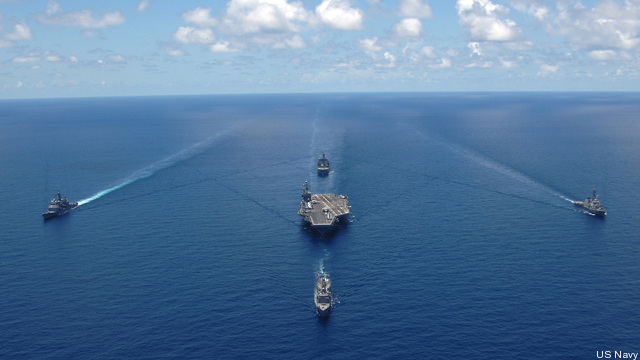EXCLUSIVE: Rep. Akin Tells Navy Secretary, Get Your Homework Done On Time – Or No Dough
Posted on

WASHINGTON: Congress orders up innumerable reports, and the Pentagon routinely delivers them months late, but the Navy’s 30-year shipbuilding plan is one report that actually matters. That’s why Rep. Todd Akin, seapower chairman on the House Armed Services Committee, will offer an amendment to the defense authorization bill at Wednesday’s mark-up session that will demand that the Navy Secretary start turning the 30-year plan in on time — or lose access to a small but highly sensitive spending account called the “triple E” fund.
“Reports are only meaningless if Congress lets them become meaningless,” an Akin staffer told Breaking Defense. “The shipbuilding report, particularly when it’s connected to the budget process, can have a real impact.” Rep. Akin’s amendment would forbid a Navy Secretary who’s delinquent in delivering the 30-year plan from spending more than 50% of his “Triple E” acount. “It’s his personal discretionary fund for him and his staff to do things like conferences,” the staffer explained. “It’s $14.8 million in 2012, so it’s not a ton of money, but the whole idea was to try to find something that would apply pressure directly to the Secretary of the Navy…something that doesn’t hurt the warfight, doesn’t hurt the average sailors, but is targeted directly at the people who are responsible for the delay in getting us these reports to us every year.”
Why is Akin so upset about this particular report? Most Pentagon projections that go further out than four or five years, beyond the current Future Years Defense Plan, are notoriously rosy scenarios, with new funding often appearing miraculously out of nowhere. The 30-year shipbuilding plan does dabble in fiscal fantasy, but its foundation is solid fact: The ships the Navy already has and the ones it has contracted to get built are known quantities, whose service lives can be accurately projected from past data on similar vessels — and in the case of nuclear-powered submarines and aircraft carriers, from isotope decay rates that are immutable laws of physics. Since most types of warships last about 30 to 40 years, a 30-year projection is essential to show how decisions in the current budget will affect the size and composition of the fleet for decades to come.
“An annual 30-year plan does provide a tool that allows long-term visibility, especially [about] whether we are pushing off long-term investments,” said Ron O’Rourke, the highly respected naval analyst at the non-partisan Congressional Research Service, in testimony before the HASC oversight panel last month. By law, the 30-year plan should be submitted alongside the President’s budget request, but this year, for example, it was delivered not only late but just a day before the Seapower subcommittee’s scheduled budget hearing, with no real opportunity for review — and even then only after a written plea from Rep. Akin to Defense Secretary Leon Panetta. So, O’Rourke urged the committee, “one way to ensure the usability of the tool is to ensure it’s submitted in a timely manner.” It looks like Rep. Akin, for one, is listening.
Subscribe to our newsletter
Promotions, new products and sales. Directly to your inbox.
